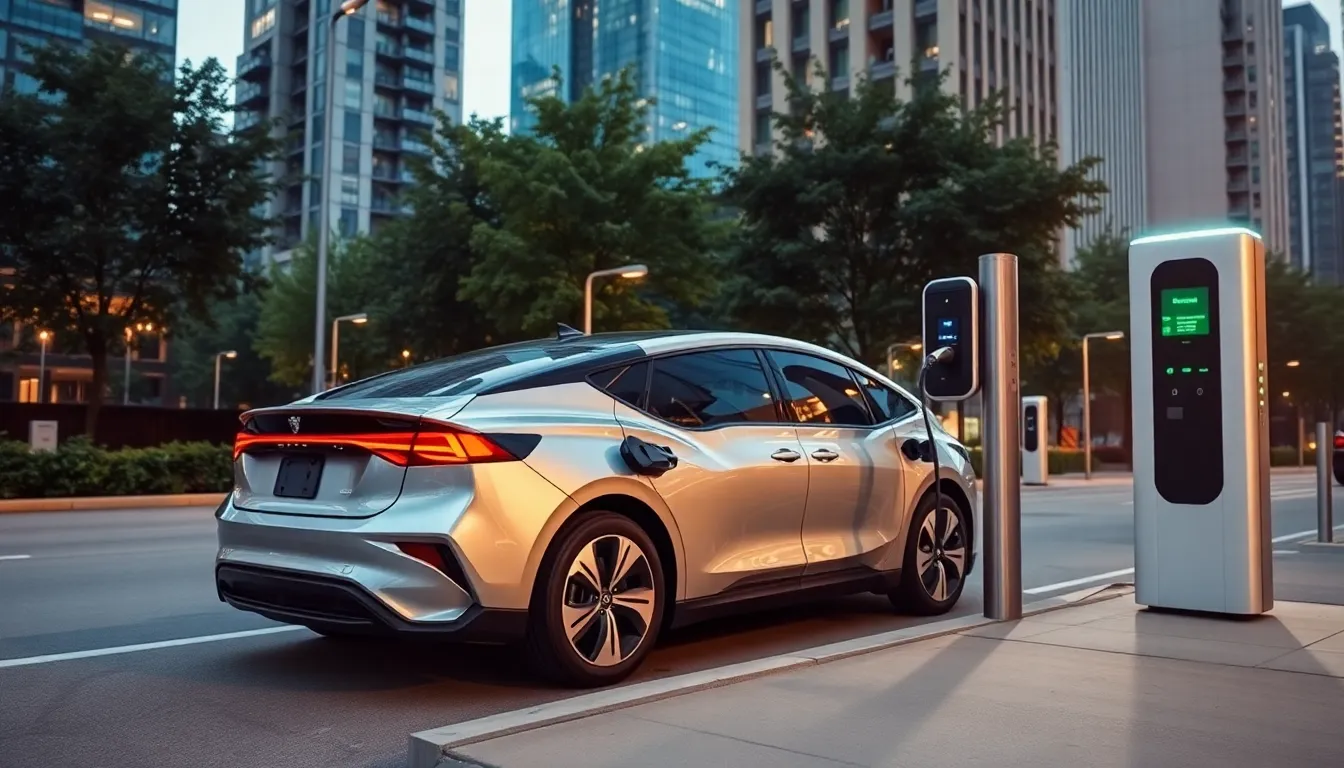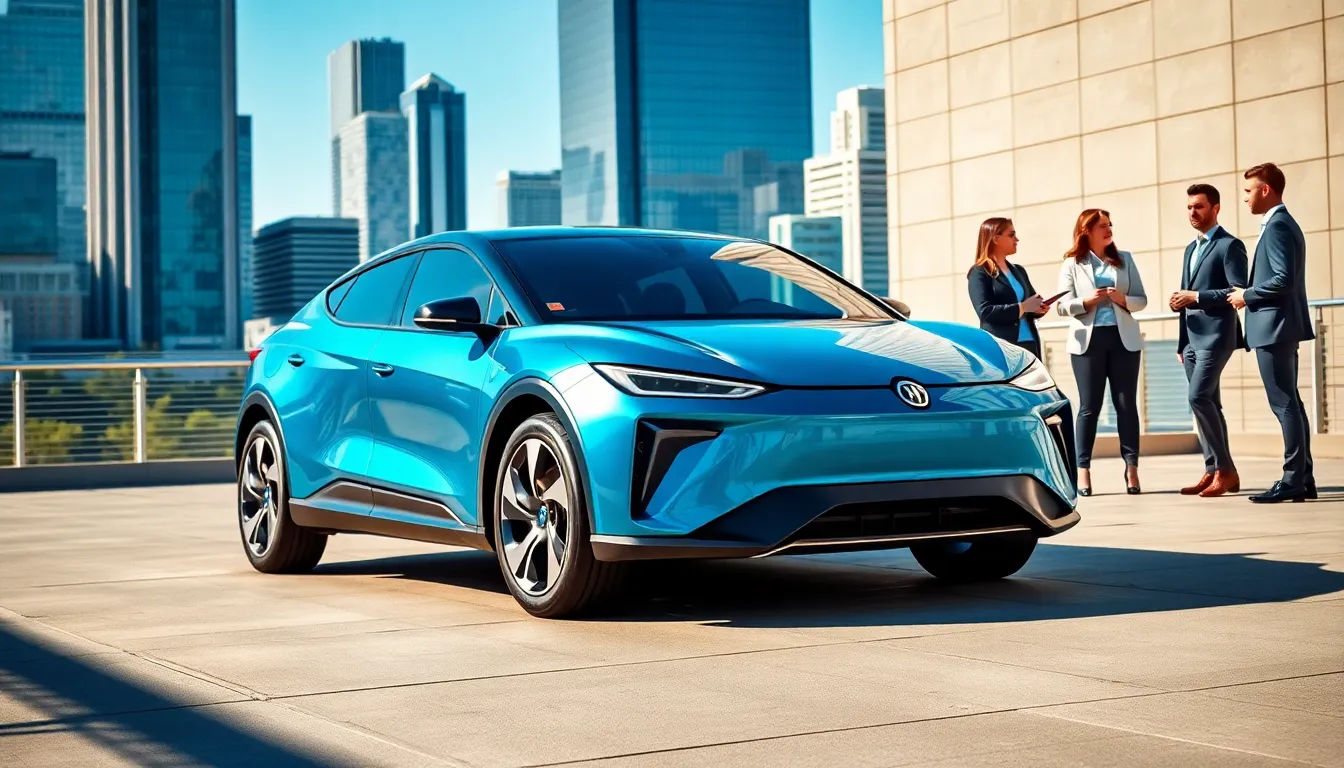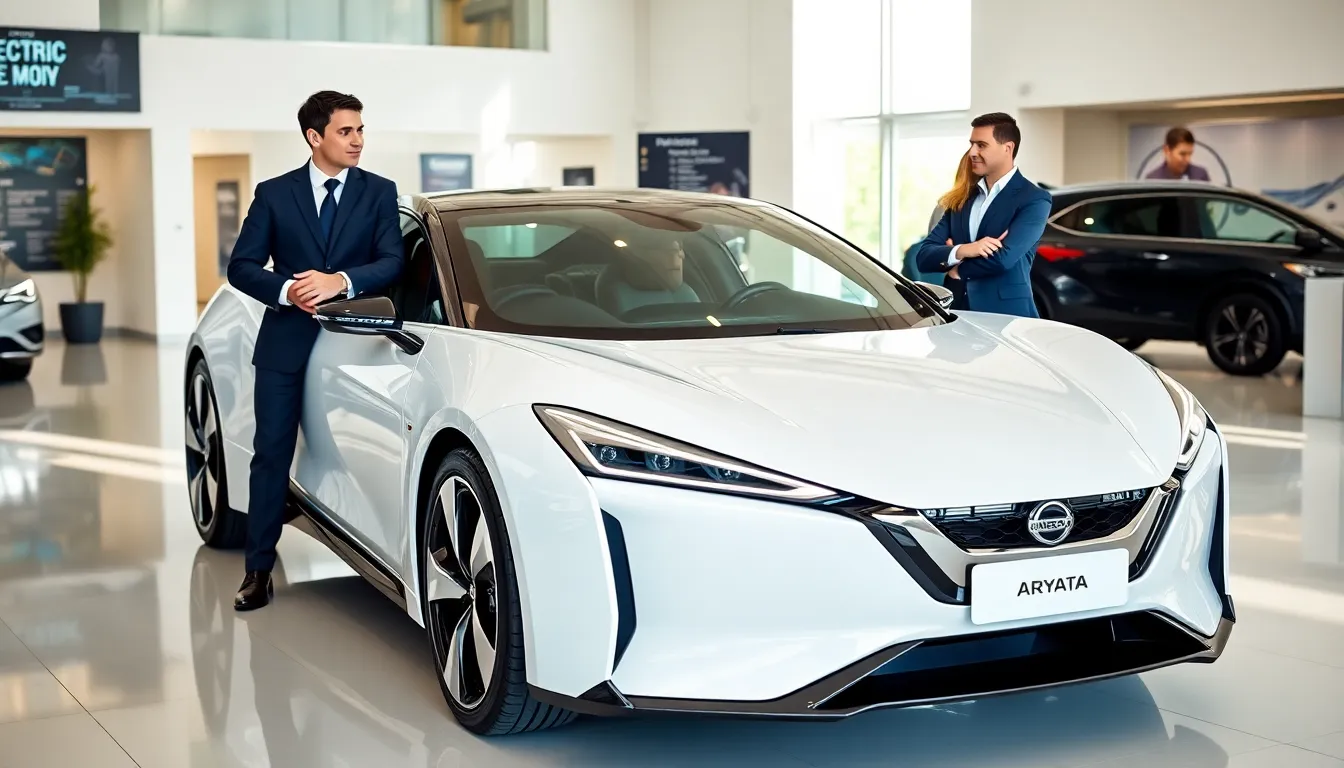Table of Contents
ToggleThe automotive industry is on the brink of a revolutionary transformation. As technology advances at lightning speed, the future of car technology promises to reshape how people drive and interact with their vehicles. From electric powertrains to autonomous driving systems, innovations are set to enhance efficiency, safety, and sustainability.
Imagine a world where cars communicate with each other and the surrounding environment, reducing traffic congestion and accidents. With the rise of artificial intelligence and connectivity, vehicles are becoming smarter, offering features that were once the stuff of science fiction. As manufacturers race to develop cutting-edge solutions, the future of transportation is not just about getting from point A to point B; it’s about creating a seamless and enjoyable driving experience.
Overview Of Future Car Technology
Future car technology encompasses several groundbreaking advancements poised to reshape the automotive landscape.
- Electric Powertrains: Electric vehicles (EVs) utilize electric powertrains that significantly decrease greenhouse gas emissions. These powertrains operate on batteries, offering efficiency and a reduction in reliance on fossil fuels.
- Autonomous Driving Systems: Autonomous vehicles employ sophisticated sensors and algorithms, enabling self-driving capabilities. Advanced driver-assistance systems (ADAS) facilitate safer driving by minimizing human error.
- Vehicle-to-Everything (V2X) Communication: V2X technology allows vehicles to communicate with each other and surrounding infrastructure. This enhances traffic management, reduces congestion, and decreases the likelihood of accidents.
- Artificial Intelligence Integration: AI plays a critical role in analyzing data from various sensors to improve decision-making. Intelligent systems adapt to driver behavior, enhancing comfort and convenience while increasing safety.
- Connectivity and Infotainment: Connectivity within cars enables seamless interaction with smartphones and other devices. This integration provides access to real-time navigation, entertainment options, and driver assistance resources.
- Sustainable Materials: Future vehicles incorporate sustainable materials in their designs. This move aims to reduce environmental impact and promote recycling within the automotive industry.
- 3D Printing Technology: 3D printing revolutionizes vehicle production, enabling faster prototyping and manufacturing. This innovation allows for customized components tailored to specific consumer needs.
- Advanced Safety Features: Enhanced safety features, such as adaptive cruise control and lane-keeping assistance, increase protection for passengers. These innovations aim for a future with fewer accidents and fatalities on the road.
The amalgamation of these technologies sets a transformative path for automotive development, pushing towards a more efficient and sustainable driving experience.
Electric Vehicles

Electric vehicles (EVs) represent a significant shift in automotive technology, focusing on sustainability and efficiency. Their adoption continues to grow as advancements enhance performance and infrastructure supports wider use.
Advantages Of Electric Cars
- Reduced Emissions: Electric vehicles produce zero tailpipe emissions, contributing to improved air quality and decreased greenhouse gas emissions.
- Lower Operating Costs: EVs benefit from lower fuel costs compared to gasoline, leading to savings on energy expenses over time.
- Less Maintenance: Electric powertrains have fewer moving parts, resulting in lower maintenance requirements and costs.
- Quiet Operation: Electric vehicles operate quietly, minimizing noise pollution in urban areas.
- Incentives: Many governments provide tax credits, rebates, or grants to encourage EV purchase, making them financially attractive options.
Challenges Facing Electric Vehicles
- Limited Range: Some electric vehicles face range anxiety due to limited driving miles before needing a recharge.
- Charging Infrastructure: A lack of widespread charging stations can impede long-distance travel and daily usage in remote areas.
- Battery Lifespan: As batteries degrade over time, replacement costs can present challenges for owners of older models.
- Initial Cost: The upfront cost of electric vehicles can be higher than traditional automobiles, though this gap is narrowing.
- Energy Production: The environmental impact of electricity generation, particularly from fossil fuels, raises concerns about the overall sustainability of EVs.
Autonomous Driving
Autonomous driving technology represents a major advancement in the automotive sector, enabling vehicles to navigate without human intervention. This technology enhances road safety and transforms transportation systems through various levels of automation and regulatory adaptations.
Levels Of Autonomy
Autonomous driving systems fall into six distinct levels defined by the Society of Automotive Engineers (SAE). These levels are:
- Level 0: No automation. Drivers control all aspects of the vehicle.
- Level 1: Driver assistance. Systems like adaptive cruise control assist but do not replace human drivers.
- Level 2: Partial automation. Vehicles can control steering and acceleration/deceleration under certain conditions, but drivers must remain engaged.
- Level 3: Conditional automation. Vehicles can handle most driving tasks without human intervention, but drivers must be ready to take over when necessary.
- Level 4: High automation. Vehicles can operate autonomously in specific environments or conditions, such as urban areas or highways.
- Level 5: Full automation. No human intervention is required; vehicles can operate in all environments and conditions.
As advancements continue, manufacturers aim to increase the automation level in commercial vehicles, improving overall traffic safety and efficiency.
Safety And Regulations
The deployment of autonomous vehicles necessitates comprehensive safety protocols and regulations to ensure public safety. Regulatory bodies worldwide, such as the National Highway Traffic Safety Administration (NHTSA), are actively developing guidelines that address:
- Vehicle Safety Standards: Establishing rigorous standards for software reliability, sensor accuracy, and system fail-safes.
- Testing Protocols: Requiring extensive testing in diverse environments to evaluate system performance and safety.
- Liability Frameworks: Defining accountability in case of accidents involving autonomous vehicles, clarifying the responsibilities of manufacturers and operators.
- Data Privacy Regulations: Protecting user data collected from vehicles equipped with connectivity features.
Compliance with these safety and regulatory measures significantly influences the timeline for widespread adoption of autonomous driving technology.
Connectivity And Smart Features
Future car technology profoundly enhances connectivity and smart features, facilitating improved user experiences and safety measures. The integration of vehicle-to-everything (V2X) communication and advanced infotainment systems drives this transformation.
V2X Communication
V2X communication allows vehicles to exchange information with other vehicles, infrastructure, and pedestrians. This technology significantly reduces the likelihood of accidents while improving traffic flow. Examples of V2X applications include signals notifying drivers of traffic congestion, hazards, or road closures. V2X systems can also enable emergency vehicles to communicate their positions, clearing the way for faster response times. These systems rely on dedicated short-range communication (DSRC) and cellular technologies, ensuring reliable and rapid data transmission. Regulatory bodies push for V2X adoption to enhance road safety and efficiency as the framework for Smart Cities develops.
Infotainment Systems
Modern infotainment systems integrate navigation, entertainment, and communication features, providing drivers and passengers an enriched in-car experience. Advanced voice recognition enables hands-free operation, enhancing safety by allowing drivers to focus on the road. Intuitive touchscreen interfaces allow easy access to music, podcasts, and navigation apps. Manufacturers are increasingly adopting over-the-air (OTA) updates, ensuring software remains current without requiring dealership visits. Moreover, some systems offer personalized profiles that adapt settings, such as seat position and climate control, based on user preferences. This seamless integration of technology enhances comfort while minimizing distractions, making it a vital component of future automotive design.
Sustainable Innovations
Sustainable innovations are critical to shaping the future of the automotive industry. Emerging technologies prioritize environmental responsibility while enhancing vehicle performance and efficiency.
Alternative Fuels
Alternative fuels contribute significantly to reducing fossil fuel dependency and lowering greenhouse gas emissions. Biofuels, hydrogen fuel cells, and electricity derived from renewable sources represent key options. Biofuels, produced from plant or animal materials, can directly replace gasoline or diesel. Hydrogen fuel cells generate electricity through chemical reactions between hydrogen and oxygen, emitting only water vapor. Electric vehicles (EVs), powered by renewable energy, offer a sustainable substitute for traditional vehicles. Additionally, advancements in storage and infrastructure expand access to these fuels, making them increasingly viable.
Eco-Friendly Manufacturing
Eco-friendly manufacturing processes focus on minimizing environmental impacts throughout the vehicle production lifecycle. Automakers prioritize sustainable materials, such as recycled plastics and bio-based composites, to reduce resource consumption. Additionally, energy-efficient manufacturing techniques, including advanced machining and automation, lower energy usage and waste generation. Factories are increasingly adopting renewable energy sources, such as solar and wind, to power operations. Implementing closed-loop recycling systems allows manufacturers to reuse materials and reduce landfill contributions, furthering their commitment to sustainability.
The future of car technology promises a remarkable shift in how society interacts with vehicles. With the rise of electric powertrains and autonomous systems, the automotive landscape is poised for a transformation that prioritizes efficiency and sustainability. Enhanced connectivity will redefine user experiences while advanced safety features aim to protect lives on the road.
As innovations continue to emerge, the automotive industry is embracing a greener future through eco-friendly materials and alternative fuels. This commitment to sustainability not only addresses environmental concerns but also enhances vehicle performance. The journey toward smarter and safer vehicles is just beginning, and the implications for everyday life will be profound.







